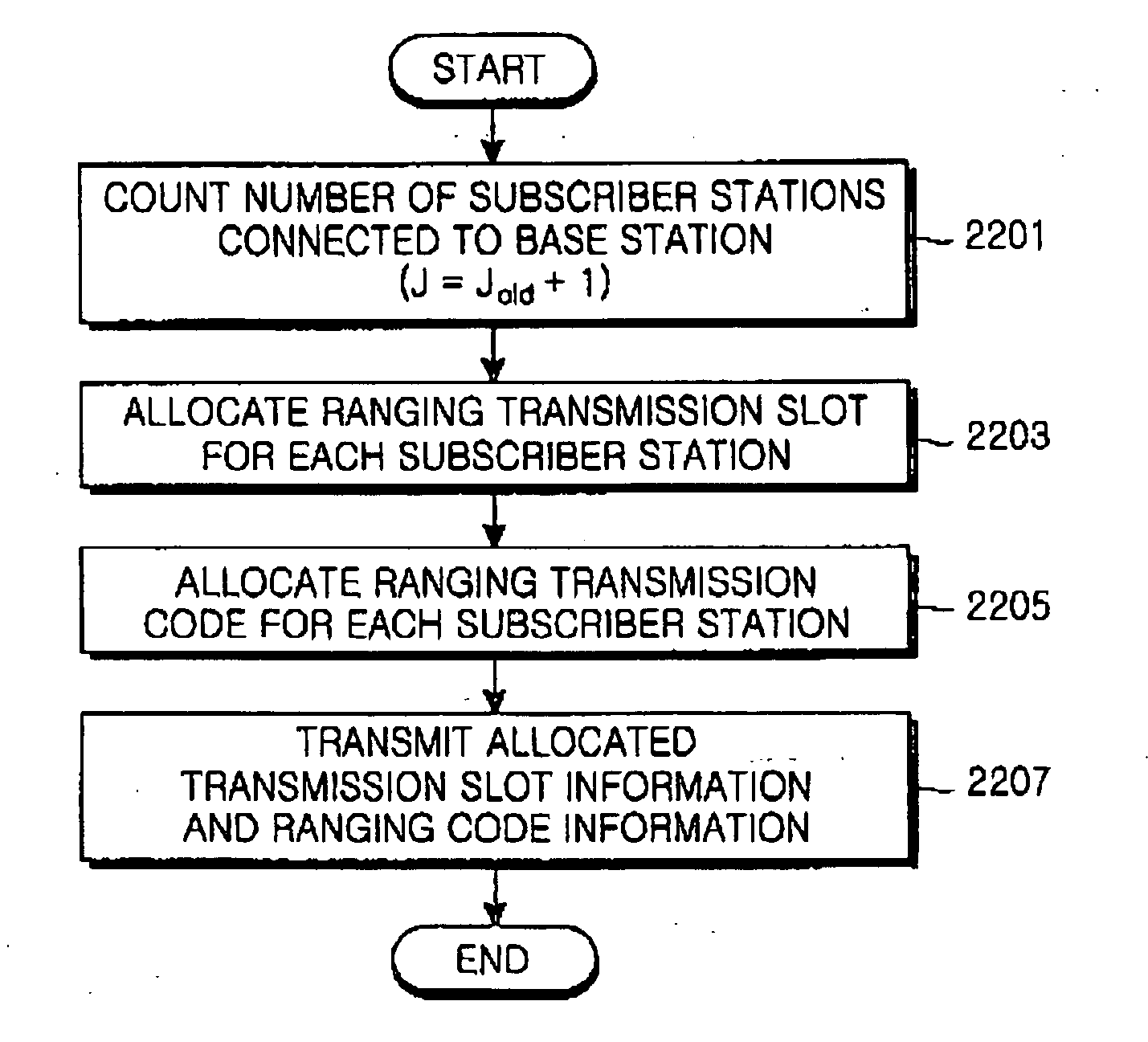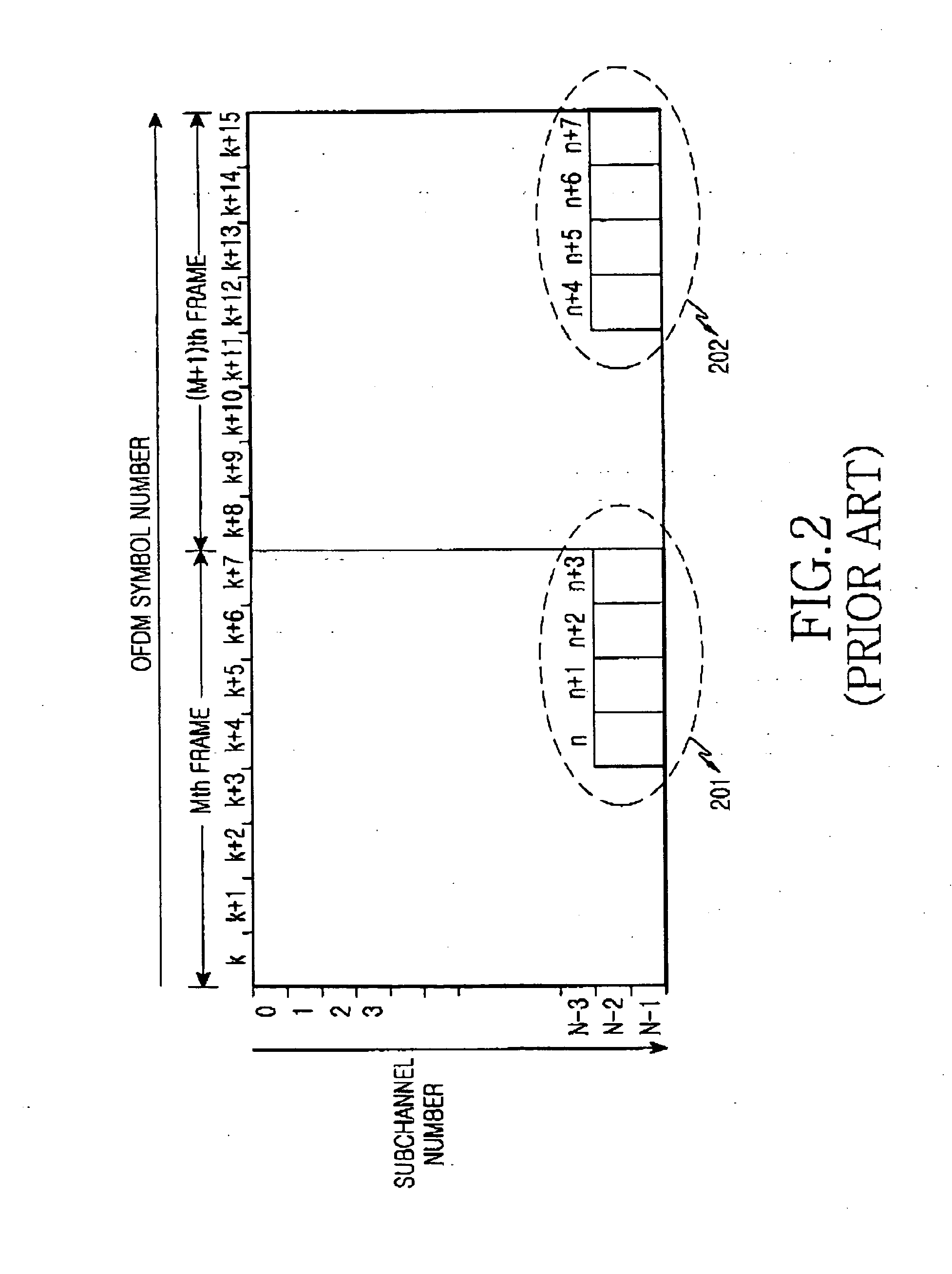In addition, because the RNG-RSP message cannot be received from the
base station, the subscriber
station repeats transmission of a ranging code for the initial ranging, after waiting for a backoff value corresponding to the exponential random backoff
algorithm.
When ranging codes collide with each other, the
base station cannot identify the collided ranging codes, and thus cannot allocate an uplink bandwidth.
In addition, because the subscriber
station cannot be allocated an uplink bandwidth from the base station, the subscriber station repeats transmission of a ranging code for the bandwidth request ranging after waiting for a backoff value corresponding to the exponential random backoff
algorithm.
However, if different subscriber stations transmit data using the same code at the same time, the base station cannot distinguish the data transmitted individually by the subscriber stations.
As described above, in the OFDMA communication system, a subscriber station randomly selects ranging slots and ranging codes for initial ranging, periodic ranging, and bandwidth request ranging during the initial ranging, periodic ranging, and bandwidth request ranging, thereby causing frequent ranging code collisions.
The ranging code collisions prevent the base station from recognizing a ranging code for the subscriber station, and the base station cannot perform an operation any longer.
Although the subscriber station performs backoff according to the exponential random backoff
algorithm due to the ranging code collision, transmission of a ranging code by the backoff may also cause collisions, leading to an access
delay to the base station by the subscriber station.
The access
delay causes performance degradation of the OFDMA communication system.
In the IEEE 802.16a OFDMA communication system, because the periodic ranging and the bandwidth request ranging utilize
Random Access technology for transmitting a random ranging code at a random ranging slot, occurrence of ranging code collision increases an access
delay time through a reconnection procedure after exponential random backoff.
Therefore, the maximum access
delay time cannot be guaranteed.
More specifically, as a code
collision rate is higher, an access
delay time becomes longer, resulting in performance degradation of the system.
That is, if subscriber stations transmit ranging signals using the same PN codes between neighbor cells,
signal interference occurs between the neighbor cells.
When a PN code used by a particular base station is different from a PN code used by a neighbor base station as illustrated in FIG. 13, the total number of ranging codes required in the entire system becomes very large, and it becomes difficult to manage the many codes in a network.
In addition, during a
handover, because each base station must have the capability to detect ranging codes allocated to neighbor base stations, a base station ranging implementation algorithm becomes very complicated.
When a plurality of subscriber stations attempt ranging to a base station according to the conventional IEEE 802.16a technology, a number of problems occur.
First, although the current IEEE 802.16 technology provides that respective cells commonly use a PN code set according to use of rangings, when subscriber stations located in neighbor cells transmit ranging signals using the same PN codes as illustrated in FIG. 12,
signal interference occurs between the neighbor cells.
In addition, it is not easy to manage the many codes in an upper network (e.g., base station manager or exchange).
Further, during a
handover, each base station must undesirably have a capability of searching ranging signals for PN codes allocated to subscriber stations belonging to a minimum number of neighbor base stations.
Moreover, when a new
cell is added to an old cell, even the neighbor cell has the same problem.
Second, when each subscriber station randomly selects a periodic ranging code for time offset tracking and channel condition compensation after initial base station access as specified in the current IEEE 802.16a technology, the base station can recognize the received periodic ranging code, but cannot map the detected periodic ranging code with a subscriber station that transmitted the ranging code.
Therefore, the base station cannot identify which subscriber station has used the periodic ranging code.
Therefore, undesirably, the base station transmits the ranging response to all subscriber stations over a
broadcasting channel.
Third, in a
wireless environment to which additive white
Gaussian noises (AWGN) are added, reception performance is deteriorated due to a lack of orthogonality between the PN codes.
In case of the PN codes, a correlation characteristic between codes does not guarantee orthogonality.
Therefore, when the PN codes share a
transmission time slot and a transmission frequency, inter-code interference occurs due to a lack of orthogonality between ranging codes, thereby deteriorating ranging performance.
In this case, because the ranging signals share a transmission slot and a transmission frequency, inter-code interference occurs.
The increased inter-code interference causes ranging failures of all subscriber stations that have attempted rangings.
 Login to View More
Login to View More  Login to View More
Login to View More 


